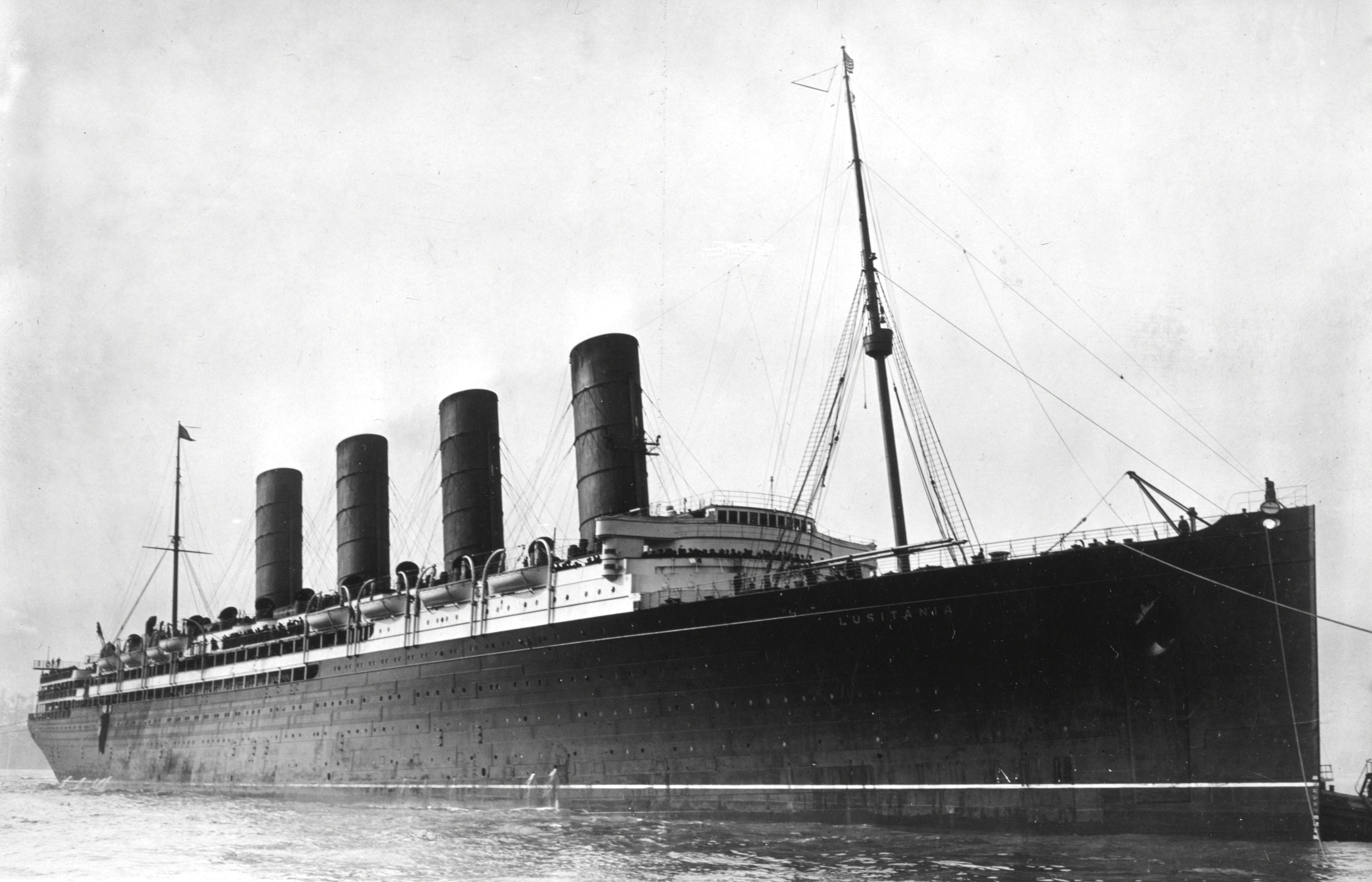RMS Lusitania
Ocean liner sunk during World War I in 1915 by a German submarine. 1,193 people were killed helping get the United States involved in the war two years later.
Year Built
1907
Year Sank
1915
Depth
305 ft (93 m)
Difficulty Level
Technical

Lusitania entering port at an unknown location in 1907.
RMS Lusitania
Wreck Location
The Integrated Mapping For the Sustainable Development of Ireland's Marine Resource details in a report the exact location and details of the RMS Lusitania's wreck site.
Lusitania lies off the Old Head of Kinsale between the major ports of Baltimore and Cobh in Ireland. The site where the ship went down can be seen from the high bluffs of the Old Head of Kinsale. On May 7, 1915, the late George Henderson, at the time a child on a family picnic, witnessed the Lusitania sink from that spot. A lighthouse stands vigilant over the Old Head of Kinsale. Fishing is extremely popular in this region of the Celtic Sea. Although prohibited to fish over the wreck by law, fisherman still comb the area over the wreck and continuously lose their nets to the Lusitania.
~ GPS Shipwreck Location ~
Latitude: 51° 24' 44.6112" N Longitude: -8° 32' 52.2708" W
Description
Lusitania is in terrible shape. She hit the bottom of the sea floor very hard, causing a break amidships. Further trouble has been caused by strong currents in the area, depth charging by the Royal Navy in World War II (mistaking Lusitania for a German U-Boat) and the presence of metal eating bacteria. The stern is split wide open, the hull is nearly flattened save for the bow section, whole steel plates have rotted away, the superstructure has disintegrated into nothing as have the four iconic funnels and multiple items not meant to occupy the same place are mixed together in a large debris pile. The Lusitania lies in over 300 feet of water in perpetual darkness. The extreme presence of fishing nets and un-detonated explosives along with the jagged twisted wreckage means Lusitania is a very hazardous wreck, even for submarines and ROVs. Dr. Robert Ballard's submarine, the Delta, was nearly trapped on Lusitania after a fishing net got caught in its propeller. The Delta made an emergency ascent to the surface after jettisoning its propeller and leaving it behind on the Lusitania. Despite Lusitania being a wartime grave for 1,193 people, the wreck has been constantly vandalized purposely and accidentally, even being looted, which explains the absense of three of its four propellers. The sanctity of the wreck is now protected by the Irish Government and has even implemented heavy diving restrictions.
Footnotes

Lusitania was built at John Brown & Company shipyards in Clydebank, Scotland in 1907 for the Cunard Line. Her sister ship was the Mauretania. For a few months in 1907, Lusitania was the fastest ship on the North Atlantic until her sister Mauretania took the Blue Riband and held it until 1929. Both were also the largest and most luxurious ships in the world. The competing White Star Line constructed the Olympic and Titanic in response to the Lusitania and Mauretania. When World War I broke out, Lusitania was not requisitioned by the Royal Navy and was allowed to continue transatlantic crossings for Cunard. On May 7, 1915, Lusitania was torpedoed by German submarine U-20 off the Old Head of Kinsale, Ireland. She sank in 18 minutes killing 1,193 people. Her sinking sparked international outrage and was one of the reasons the United States entered World War I.